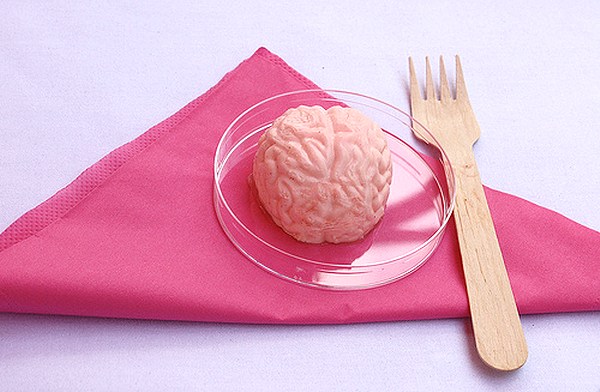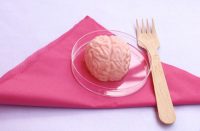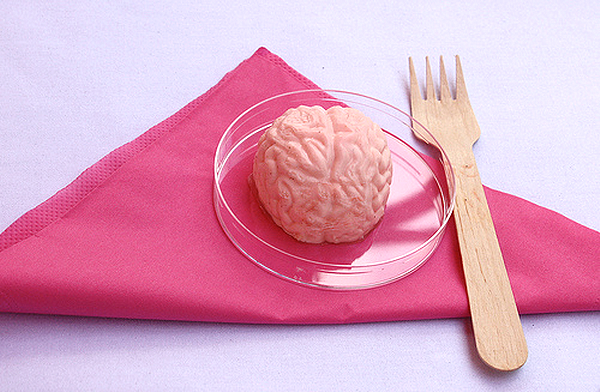Brain Bites are “now and then” updates regarding trends, statistics, and interesting info‑bites in personal economics. These tasty tidbits help maintain your edge over an unpredictable future. Think of them as cerebral snacks for the hungry mind!
Age invaders
The world is on the cusp of a staggering rise in the number of old people and they will live longer than ever before. By 2035, the U.S. will have 44 people age 65 and over for every 100 between 25 and 64 (Japan will have 69). The less-educated of all ages and jobless young will find themselves squeezed.
Ref: The Economist
Broke, busted, disgusted
By the time every Baby Boomer is collecting Social Security and Medicare (2030), the ratio of taxpayers to retirees will have fallen to about 2 to 1. When Social Security first went into effect, the ratio was more than 20 to 1.
Ref: Pew Research Center
The ultimate buzz
An estimated 20,000 teens or young adults went to the emergency room in 2011 after consuming energy drinks. More than half of the patients told doctors they had consumed only energy drinks.
Ref: Substance Abuse and Mental Health Services Administration
Parity please
In 1968 the minimum wage was $1.60, which is $10.74 in 2013 dollars, or $22,339 a year. In April, 2014 President Obama called for an increase in the minimum wage to from $7.25 to $10.10 an hour for Federal workers.
Ref: Fortune
Do it yourself moms
Rising cost of child care is among likely reasons for the rise in the number of women staying home full-time with their children. In 2012, 29% of mothers did not work outside the home. In 2011, the average weekly child care expense for families with working mothers who paid for child care was $148.
Ref: Pew Research Center
Marriage and poverty
In families headed by married couples, the poverty level in 2012 was just 7.5%. In those with a single mother, it was 33.9%.
Ref: Beverly LaHaye Institute
Taking root
In 1985, 1 in 5 Americans reported moving the previous year. About 3% relocated to a different state. In 2013, only 11.7% had moved in the previous year, and 1.6% left for a different state. Economists attribute this to less plentiful jobs, lower wage premiums, and a greater reluctance of employers to hire and workers to quit their existing jobs.
Ref: Institute for Study of Labor
Jumping the gun
Young persons in their 20s are visiting dermatologists these days for “pre-juvenation.” Treatments include micro-dermabrasion and Botox to delay the onset of wrinkles. They say they want to start early so they don’t end up looking like their parents.
Ref: Wall Street Journal
Insatiable appetite for data
Between 2012 and 2017, global mobile data traffic will increase 13-fold, reaching 11.2 exabytes per month by 2017. One exabyte could hold all the printed material in the Library of Congress 100,000 times over.
Ref: Cisco Systems
Privacy? How quaint!
2,000-plus: estimated number of times the online activity of an average Internet user is tracked every day; $27.61: estimated annual value to Facebook of a very active U.S. female user’s data ($22.09 for a male); 3,000-plus: number of shopping tendencies that can be measured for nearly every U.S. household.
Ref: Acxiom Corporation
Up, up, and away!
More students are taking on debt to finance higher education. 70% of Class of 2014 bachelor’s degree recipients will leave school with student loans, averaging some $33,000. From 2005 to 2012, average student loan debt jumped 35%, adjusting for inflation.
Ref: Wall Street Journal
Worth dying for?
Distracted driving killed 3,331 people and injured approximately 387,000 nationwide in 2011. The average “eyes-off-the-road” time was 4.6 seconds; at 55 mph, this is the equivalent of driving the length of a football field—blindfolded.
Ref: National Highway and Safety Administration
Maturity is the ability not to see the world as absolutes, but shades of gray.
~ Ayn Rand, author, philosopher
The information in Brain Bites is sourced from a variety of usually reliable publications. Nevertheless, we cannot guarantee the accuracy or currency of this material and a degree of common sense should be applied before quoting it. If something appears to be too good to be true, it probably is.
Image credit: “Jelly Brain Dissection” by Guerilla Science (2010), licensed/modified (red ring removed) by permission of copyright holder.


